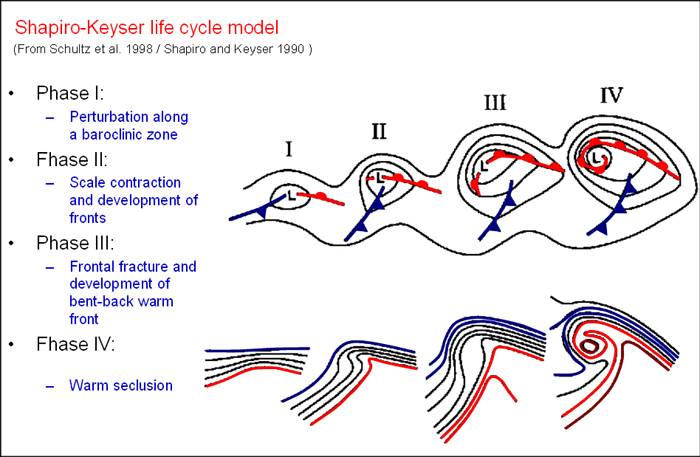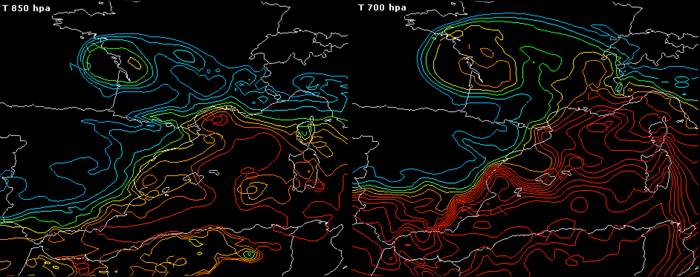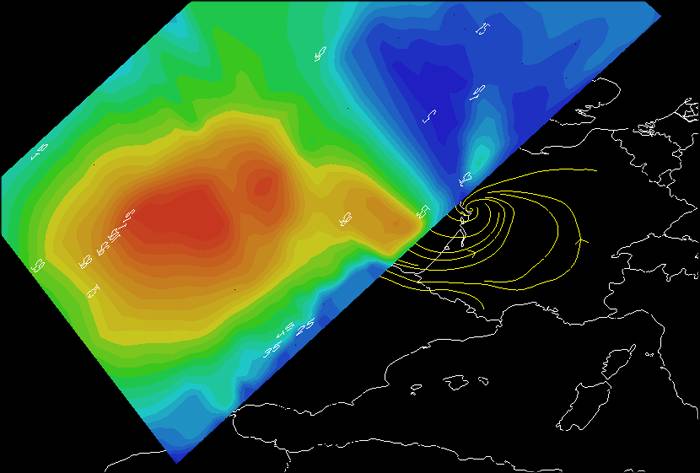Chapter II: Physical Background
Table of Contents
- Chapter II: Physical Background
- Physical Background
Physical Background
Klaus storm life cycle followed more or less the evolution proposed by Shapiro and Keyser model, going through explosive development periods, as fast as 34 mb pressure falls in 24 hours, and ending up with a very intense warm seclusion phase.
Below, ECMWF 850 and 700 hpa temperature analysis, for January 24 at 06 UTC. They show quite clearly the warm anomaly associated to the final stage of the cyclone (warm seclusion phase), vertically aligned with the cyclone center. The detached cold front had already reached by this time the eastern and southern coast of Spain. Is not rare for this type of systems to be accompanied by hurricane force winds or wind gusts, as shown before.
The thermal field around warm seclusions usually is very symmetrical, but this is not the case for the wind field, which is highly asymmetric, as shown in the 06 UTC ECMWF wind speed vertical cross section analysis below. The flank of the cyclone with the most intense winds tends to be the one coincident with the direction of movement of the system, in this case, the southern flank. In general terms, apart from the magnitude of surface pressure gradients, the speed of the cyclone has an important impact on maximum surface wind gusts.


